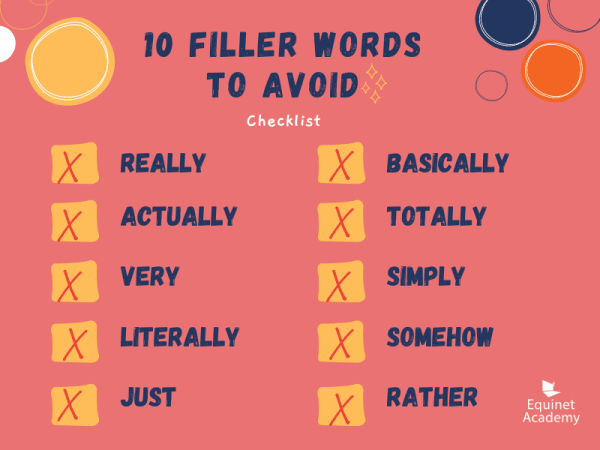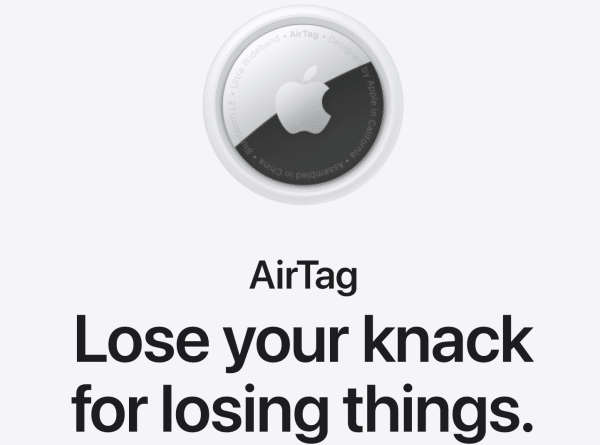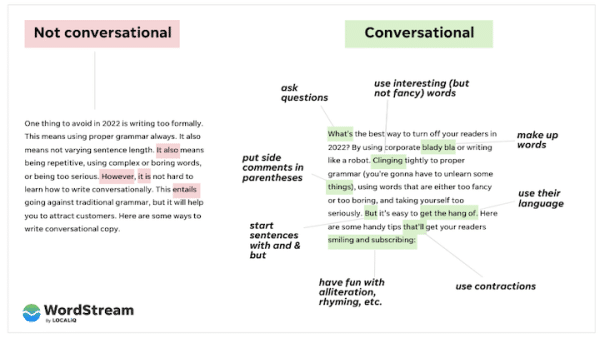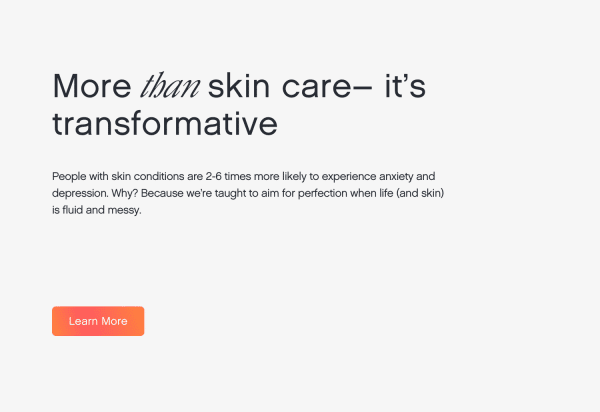7 Simple Yet Effective Copywriting Tips to Start Writing Better Copy
1.1 What is Copywriting?
Copywriting refers to creating content in the form of text, also known as ‘copy,’ that persuades readers to take a specific action. Copy can be long, like blog posts and articles, or short, like a slogan or tagline for an advertisement.
“Copywriting originally referred to writing for advertisements (paid content). Today, it is often used interchangeably with content writing (unpaid content). So, for the purpose of this article, we will use copywriting to encompass both forms of writing.”
Copywriting is useful in making persuasive marketing content that can engage your readers. It is crucial to running a business as it tells your potential customers what your business is about and why they should buy from you.
When done well, good copy can lead to positive results, including increased web traffic, product sales, and email sign-ups. However, there is an art to copywriting that may be hard to grasp at first — which is why this article will go in-depth into how you can start writing better copy.
1.2 Key Elements of Copywriting
Some of the key elements of good copywriting include the following:
- Know your product extensively. Ensure that you are well versed with your product— who it’s targeted to, the problem it solves, its benefit to your audience, and what differentiates it from your competitors.
- Know your audience. Identify who your target audience is, including what they need, how they think, and what they are passionate about. Reflect this in your copy, and your audience will feel like you genuinely understand their problems and, more importantly, how to solve them.
Source: https://mytopicals.com - Write compelling headlines. The majority of your readers won’t read beyond your headline. For this reason, you should write headlines that captivate the reader and make them want to keep reading. A compelling headline should give your readers an idea of what the service, product, or message is but leave enough curiosity that they want to know more.
- Have a good understanding of SEO to ensure your article can rank well. When writing for the web, your copy must help your website rank at the top of Google’s search results. This would require you to use some SEO writing tips, particularly including SEO-friendly keywords in your writing. Remember, there is no point in having the best copy in the world if no one is going to see it.
- Include a strong Call-To-Action (CTA). Ensure that your copy contains a clear CTA, ideally only one at a time. A good CTA must be brief but clear to your readers. It should be clear what the reader should expect once they go through with the action.
A good example of a clear CTA.
Source: https://www.equinetacademy.com
2. 7 Tips to Write Better Copy
Good copywriting is a skill that can be learned with time, practice and proper knowledge. Here are seven tips you can use to start copywriting:
- Stick with simple copy first
- Use storytelling as a hook
- Revisit your copy after a break
- Make use of odd numbers
- Use compelling language
- Long-form copy
- Write conversationally
2.1 Stick with Simple Copy
You may think that using complex or complicated words makes you sound more professional and have more impact, but that’s not always the case. Sometimes, the simpler the copy, the better.
Your main aim when writing copy is to make it as easy to understand as possible. You can still be creative while using simple and direct language to make it easier for your audience to digest the information you’re sharing.
Here are some tips to keep your copy simple:
- Use fewer adjectives. While it’s always best to use adjectives to describe what you’re selling, try not to overdo it and stick to 1–2 per sentence.
- Cut out unnecessary words. Your copy should be clear and concise, so it is best to cut out words where possible.
- Write short sentences. Readers often skim through text, so shorter sentences will make it easier for them to digest and fully comprehend.
- Avoid jargon and technical terms. Use language that is familiar to your readers.

Simplicity in copywriting reduces the stress on your reader’s working memory, otherwise known as cognitive load. A high cognitive load can interfere with one’s thought process and increase the likelihood of misunderstanding or forgetting the information.
Simple copy should be:
- Specific, as it directly communicates the message and ensures that message leads to action.
- Efficient, since your readers don’t always have much time to spend reading.
- Inclusive, since it is intended for a wide and varied audience.
2. 2 Use Storytelling as a Hook
Storytelling is essential in copywriting to capture the reader’s attention, incite emotion, and entice the customer to take action. A good story can increase the reader’s attachment to a product or service as it gives them a chance to picture their life with or without the product.
Good stories can also increase engagement with ads because they resonate with readers on a deeper level, creating trust. Creating an emotional connection is important because people often react emotionally in the moment and justify their actions with logic later on.
Various storytelling techniques can help make your story more engaging. One of the most popular techniques is making the story relatable to the audience based on their demographics, values, interests, lifestyles, and goals. Using a relatable story can incite emotions such as empathy, hope, or even suspense.
A story can describe a hypothetical scenario, a personal experience, or something that happened in history. You can also use testimonials from past customer experiences detailing a specific problem and how they overcame it. Whatever story you tell, make sure it focuses on the customer’s needs.
2.3 Revisit Your Copy After a Break
Take a quick break from writing when you feel stuck. Sometimes, writer’s block simply means you need to rest. A break can be as short as an hour, as long as a day, or even longer, as long as you peel yourself away from the writing and keep it out of mind for a while.
Taking a break gives you some time off to get a more objective perspective on the content of your copy. It will also allow you time to reflect on your ideas and view them from multiple perspectives.
After getting adequate rest, you should become more alert and productive. You can then get back to edit, critique, and improve the copy with a fresh pair of eyes.
2.4 Make Use of Odd Numbers
Try to include odd numbers in the headline to make your copy more attractive and memorable to the readers. As surprising as it may sound, our brains gravitate more toward odd numbers than even numbers.
Research suggests that odd numbers impose more cognitive load causing our brains to take up to 20% longer to process them than even numbers. Since even numbers are less tasking to the brain, they tend to have a lower attention-seeking capability.

Odd numbers in headings are more captivating than even numbers.
Source: SpruceEats
As humans, we tend to prefer things with symmetry subconsciously. That is why we find even numbers more normal and comfortable than odd numbers. However, we retain information better when it’s different, unusual, or abnormal, making us more likely to memorise odd numbers.
Since one of the primary purposes of copywriting is to capture the reader’s attention, try using odd numbers to attract attention and make your copy more memorable.
2.5 Use Compelling Language (Power Words)
Always use compelling words in your copy to capture the reader’s attention and persuade them to take action. People generally lose concentration after 8 to 10 seconds, so you must make the most of the first few words in your copy to grab their attention and entice them to read more.
Power words are persuasive words that trigger emotional responses. You can make your copy compelling by using power words like ‘now’ and ‘quick’ to trigger psychological and emotional reactions in the reader. You can also use power words to set off a wide range of emotions in your reader, including curiosity, trust, vanity, and more.

A compelling word like ‘experts’ can incite a sense of trust in your readers.
Source: Good Housekeeping
Power words are especially crucial for ad copy, where you only have a few seconds to grab your audience’s attention. For more tips on making your ads more compelling, check out our post on the best practices that make your ads more engaging.
Lastly, ensure that your sentences have a good rhythm and distinctive flow that makes it enjoyable to read.
2.6 Long-Form Copy
Writing long-form copy is often beneficial because it enables you to include more information about the product or service you are advertising. It also gives you more time and opportunities to sell to your reader.
Long-form copy is especially suited for new products or companies as the customers tend to have more questions about the unfamiliar. It also lets you tell your story, which can help overcome any objections your readers might have. It’s also the perfect opportunity to engage your readers and relate to their emotions.
Additionally, using long-form copy is excellent for SEO. Even without keyword placement, search engines love long-form content as it keeps the reader on the site longer. If you also use other SEO tactics like keywords and frequently asked questions, you will vastly increase the chances of your site ranking in search results.
While long-form copy has many advantages, you must remember to make the copy engaging and enticing to read. Readers tend to skim through articles and rarely read them thoroughly. That is why you should also organise your long-form copy in a way that allows readers to get the general idea without reading every word. Simple tricks like using bullet points and short paragraphs are great for making your long-form content easier to digest. Other tricks include bolding text to make your article “skimmable” and easy to digest in a quick glance. If it presents value to the reader, they will read your content in more detail.
2.7 Write Conversationally
Conversational writing means writing like you’re having a one-on-one conversation with your reader. The writing doesn’t have to be polished, and it should be as casual as possible without sounding unprofessional. Use simple, straightforward language and speak directly to your reader using the second person pronoun, “you”.

Make your copy about your customer by speaking in the second person.
Source: Apple UK
Research by Neil Patel has shown that using a conversational tone in writing increased readership by 247%. A conversational tone is more appealing to most people and increases the chances of the reader understanding your message and reading it to the end. It also identifies with the reader resulting in a deeper emotional connection with your content.

Source: Wordstream
Of course, how conversational you are will depend on your target audience. For example, the tone used in copy meant for teenagers will differ from that for corporate lawyers.
Conclusion
Good copy is critical to communicating your brand message to potential customers. Given how competitive the space is for readers’ attention, use these tips to improve and optimise your copywriting to be powerful and effective for your readers.
When you write, remember to write copy that resonates with your audience and connects with your readers. Good copy must always be simple yet compelling to the reader. This way, your brand will start gaining loyal customers, and conversions will soar.
If you want to learn more about copywriting and content writing, sign up for the WSQ Copywriting and Content Writing course. We also host a wide range of digital marketing courses here in Singapore and a Certified Digital Marketing Strategist v2 which covers the following modules:

Chris is a senior Marketing & Communications professional with over 31 years’ experience as both an in-house practitioner and as a consultant servicing clients from a wide range of industries. He possesses the unique combination of strategic, creative, technical and writing skills critical for today’s integrated marketing needs. Chris is currently also the lead trainer for the Copywriting and Content Writing Course here at Equinet Academy.

